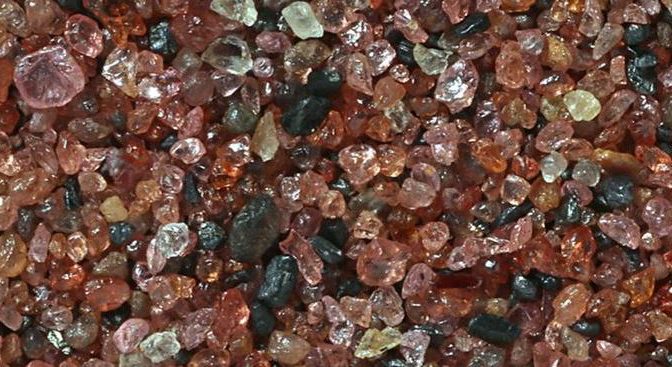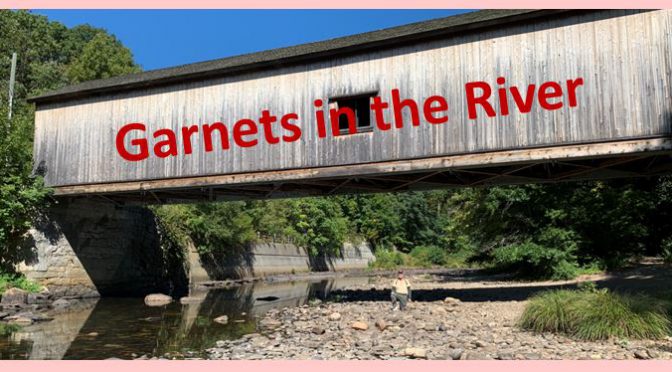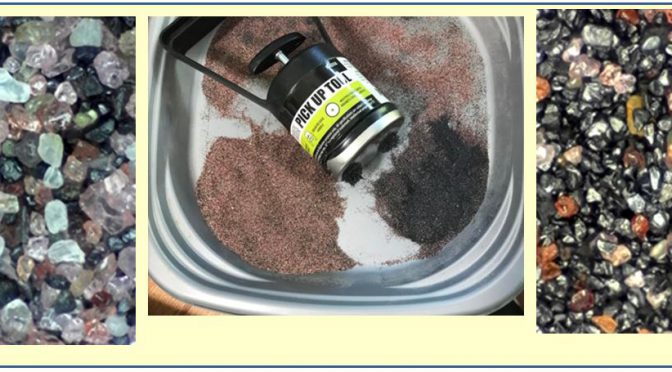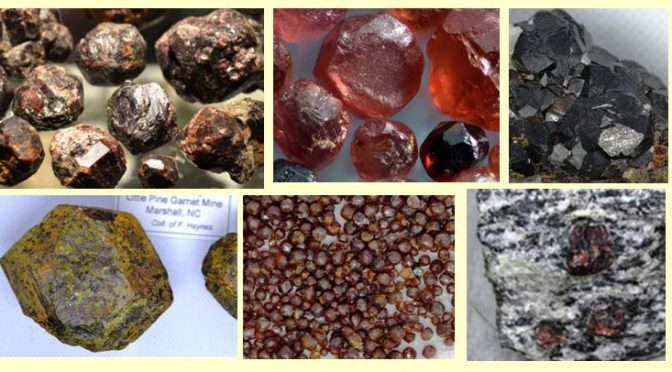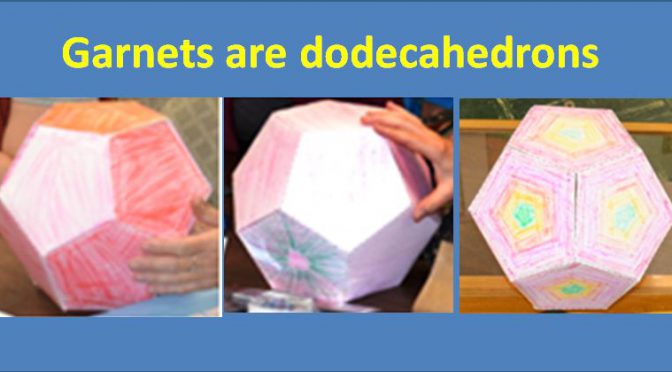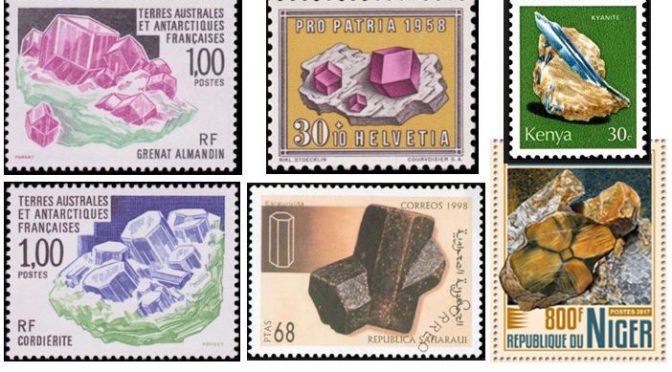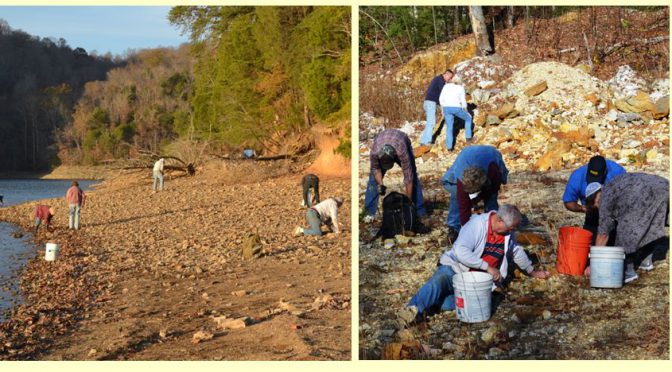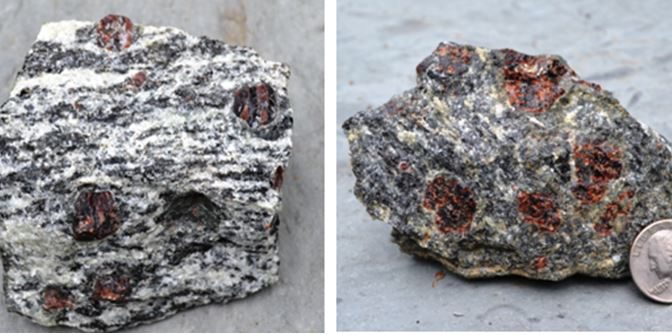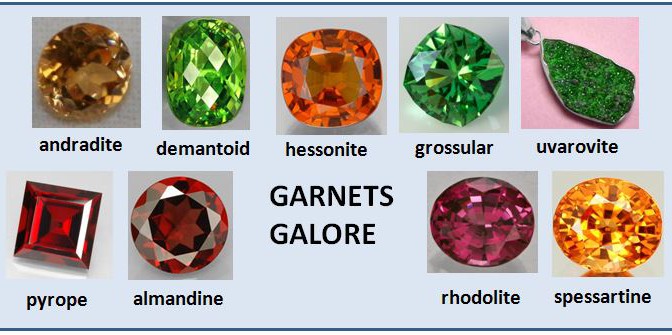In early 2020, I was comfortably sitting in my man cave planning a September trip to collect beach sands along the coastline of southern New England. While cruising along the shoreline using Google Maps satellite images I spotted a bright red patch of beach near Madison, Connecticut. Zooming in, there seemed no doubt. The beach sand there is red. Could the dominant mineral in that patch of beach be garnet? If it is, this could be a highlight stop along the trip. Continue reading A Sea of Garnet Sand
Tag Archives: garnet
Garnets in the Salmon River
Article from November 2020 Wayne County Gem and Mineral Club Newsletter
While Linda Schmidtgall liked the garnets weathering from a schist roadcut in Tolland, I believe I have had more fun playing with the garnet-bearing sand recovered from below the Comstock Covered Bridge in East Hampton, CT. Both make great sand samples and both sourced their garnets from the Devonian Littleton schist, a mica- and garnet-rich metamorphic rock formed during the Acadian orogeny (mountain-building event) ~375-325 million years ago. The Acadian event was the third of four orogenies along eastern North America that collectively created the Appalachian Mountains and surrounding terrains.
Heavy Sands, Hamlin, NY
Last July I collected one of my first sand samples, locating garnet-magnetite sands in a small cove east of Hamlin State Beach on Lake Ontario. It turned out to be one of the more popular trade sands I have and although I still had some I decided to venture out again this year. I was curious whether the accumulation would still be there, virtually one year later. Perhaps last winter’s storms removed the heavy sands and I might have to search anew. But they were right where they had been a year ago and even more stratified.
Collecting Garnets
The spring of 2020 was not a time for collecting and it appears the summer may not be much better. But that does not preclude me from reminiscing about a few past trips and finds. And I have decided to do that with a focus. I am going to think about all the places that I have been with Wayne County Gem and Mineral Club where garnets could be collected. Not only is this club “always looking for places to dig”, but they are pretty darn good at finding them.
Hamlin State Beach .. and garnet sand
Last March, Jim Rienhardt brought his collection of some 270 sands to the WCGMC meeting and told us about arenophiles (sand collectors) (Reinhardt, 2018). Jim repeated his presentation at the Rochester Academy of Science later that month. At that meeting RAS member Paul Dudley brought along some sand he had collected from Hamlin State Beach some 50 years ago. Paul’s sand was red and dominated by garnet, but full of other heavy minerals. He told us that the sand had been collected during a college field trip late in the spring when Lake Ontario first started to recede from winter highs.
I parked that in my memory and on my calendar and on July 8th set out to find some “garnet” sand for myself. I was not disappointed. The first stop I made was at Area #5 at the west end of Hamlin State Beach. The Lake level seemed to have dropped, perhaps a foot from its highest erosional cut. And in the bank left when the lake level was highest was a 2-3 cm thick band of black and red sand. I sampled and took pictures and moved to other areas of the park.
WCGMC makes Garnets
We do a lot of different things at WCGMC meetings and on workshop Saturdays. I don’t often document these activities to my blog as I don’t think they would generally interest folks outside the club. But at the June meeting this year we did something a little different and I decided my newsletter note for the July newsletter served to be placed here. You see we made garnets …. well, sort of.
Porphyroblasts
Porphyroblast: I’ve always thought that was such a neat word, maybe even interesting enough for a story. Say it out loud three times (“pore-fur-o-blast, pore-fur-o-blast, pore-fur-o-blast”). Now don’t you want to learn more, perhaps even own a few?
Porphyroblasts are those large recrystallized minerals that grow in the groundmass of a metamorphic rock, most typically in schists and gneisses. In New York State, we immediately think of the bright red almandine-pyrope garnets in the gneissic rocks in the Gore Mountain area, but the truth is the metamorphic schists and gneisses throughout New York and New England often contain garnet porphyroblasts. Unfortunately a lot of New York’s garnets are hosted in high-grade metamorphic gneiss and they don’t display crystal faces when the rocks are broken. Nevertheless they are large, colorful and fun to collect.
Collecting In North Carolina and Tennessee
Last month I wrote about the Arkansas portion of Wayne County Gem and Mineral Club’s November field trip south (quartz, quartz and more quartz). But we did not stop there. After three days of collecting SiO2 in and around Mt. Ida, Arkansas, ten of us pointed our large black van east and headed to Tennessee and North Carolina. There was still a bit of space to fill in the van and in the trailer and we simply could not head north without filling all possible nooks and crannies. Here is how we did it! Continue reading Collecting In North Carolina and Tennessee
Adirondack Garnets
Garnet mining in New York State dates back to the late 19th century when the Barton Mine first opened in 1879. Henry Barton experimented with garnet as a harder and more durable abrasive than simple sand and after a fisherman friend told him about the prolific garnets in the Adirondacks he staked his claims and went into production (Kelsey, 2015).
Garnet – January Birthstone
Wayne County Gem and Mineral Club has decided to make 2016 the year of the Birthstone. And isn’t garnet a great way to get started!
Garnets are hard (Moh’s hardness of 6.5-7.5), or as hard or harder than quartz. As members of the isometric crystal system garnets are symmetric with three equal and perpendicular axes. Garnets are colorful: red, yellow, green and many shades of each. And garnet is the birthstone for all born in January.
